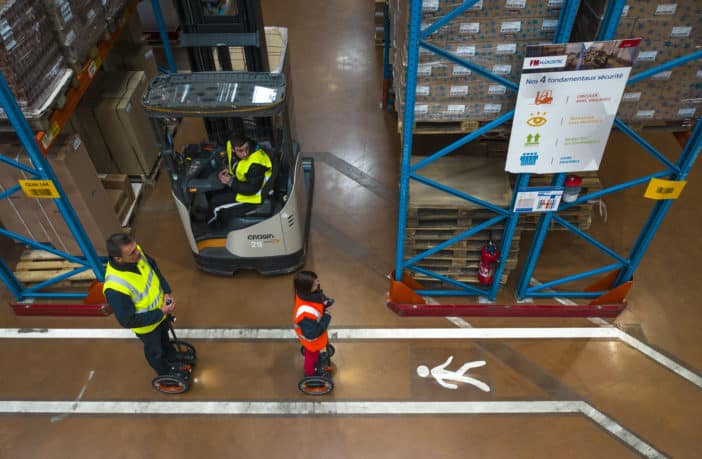Grade a warehousing – a boon for modern supply chains?
Consumer trends changed significantly in 2020, setting off a positive chain reaction for the logistics industry in India. A new National Logistics Policy, GST and the Covid-19…
On April 14, 2021

Consumer trends changed significantly in 2020, setting off a positive chain reaction for the logistics industry in India. A new National Logistics Policy, GST and the Covid-19…
On April 14, 2021
Consumer trends changed significantly in 2020, setting off a positive chain reaction for the logistics industry in India. A new National Logistics Policy, GST and the Covid-19 pandemic resulted in an unprecedented growth of this sector. Modern warehousing facilities that offer high efficiency and high value whilst maintaining global standards and ensuring accurate fulfilment processes are booming.
As per a Knight Frank Report, India has a substantially higher logistics cost to the tune of 13-14% of the GDP compared to 8-10% of developed countries. This has been attributed largely to the lack of an efficient transport network and its fragmented structure.
Digitisation and the demand by the consumers for faster deliveries especially e-grocery grew the e-commerce sector from 3% to 5% in 2020 vs. 2019, breaking a decade old record for India. (Source: RedSeer Consulting)
Firstly, the highly-fragmented warehousing sector can be categorised into unorganised and organised. The unorganised area, known as “godowns” lack racking systems, lighting, ventilation, hygiene, safety measures and has limited mechanisation. To adapt to changing times, players in this sector have started consolidating their assets or selling them to larger companies.
Organised warehouses are likely to meet the demand for streamlined operations, automation, tracking mechanisms, value added services like consolidation, labelling, packaging & repackaging. From a workplace perspective, well-ventilated, hygienic and proper facilities for workers serve as a major motivation.
Competition for space and real estate has intensified even in Tier 2 and Tier 3 cities, where the warehousing players are now acquiring land, technology and efficient systems. As pharmaceuticals, manufacturing and e-commerce companies grow more warehouses for rent will be required to meet the growing demand of organised warehouses.
These warehouses are equipped with facilities and technologies for logistics and supply chain management. For example, they have receipt, dispatch, loading and unloading of goods in a systematic manner. However, even in the organised sector challenges some challenges continue to persist. For example, automation, innovation in processes, optimal space utilisation, trained manpower, IT, standard operating processes leading to goods being handled in an ad-hoc manner…
Secondly, in the post Covid-19 world, the demand for warehousing is already increasing. It is link to the fact that companies aim to reduce inefficiency and increase product availability close to end points.
Some of the other effects are:
Covid-19 vaccines will also require storage and delivery options across the country and will further drive the business this year.
Parameters like these have led to a structural shift in the logistics industry and accelerated change due to the market demands driven by the pandemic.
There are huge opportunities for organised and Grade A warehousing with only 110 million square feet of stock available across the country to cater to rising demands. Companies are looking at warehouses with international standards, which ensure efficient operations of the supply chain and a lower Total Cost of Ownership. Ideal for large and complex businesses who are looking to scale and have complex supply chain processes. Grade-A warehouses are built to match the client’s business requirements, processes for seamless warehouse operations.
Grade A warehousing facilities are designed for additional height and better floor quality (FM2 flooring). Innovative material handling equipment can be used as FM2 flooring allows for such implementation. Better time management is seen due to more processing docks with wider dock aprons. Overall a planned and systematic storage ensures a compliant, safe and secure space for your goods. Built using superior construction quality, strategic locations and amenities, they allow the customer to focus on their core business.
As per a report by Knight Frank Research, over the next five years the Indian manufacturing sector will require an incremental 17 million sq. m. (183 million sq. ft.) of space. With Government initiatives like “Make in India” and a robust growth of ecommerce, warehousing is likely to play a pivotal role in the growth of the Indian economy. Interested in ecommerce logistics in India ? Discover our new article “Ecommerce in India – The “New Normal” for Consumers and Supply Chains?” !
Fill in the form